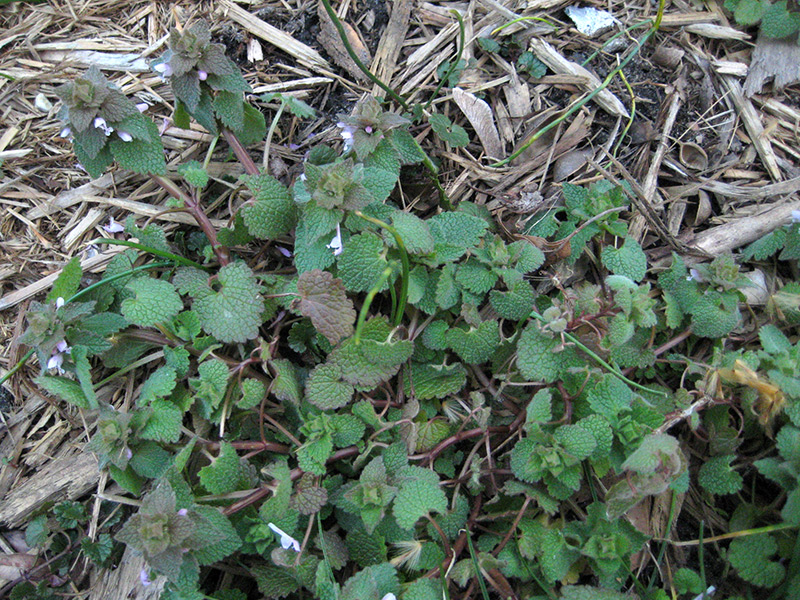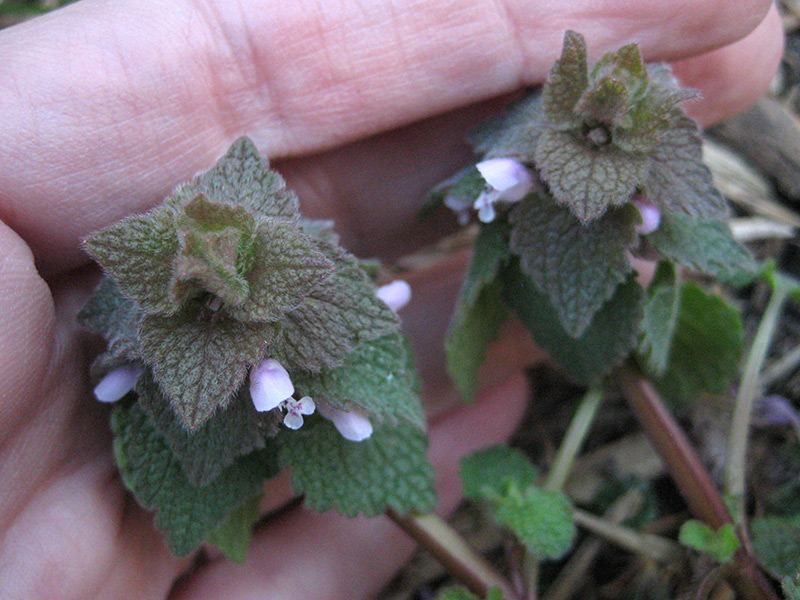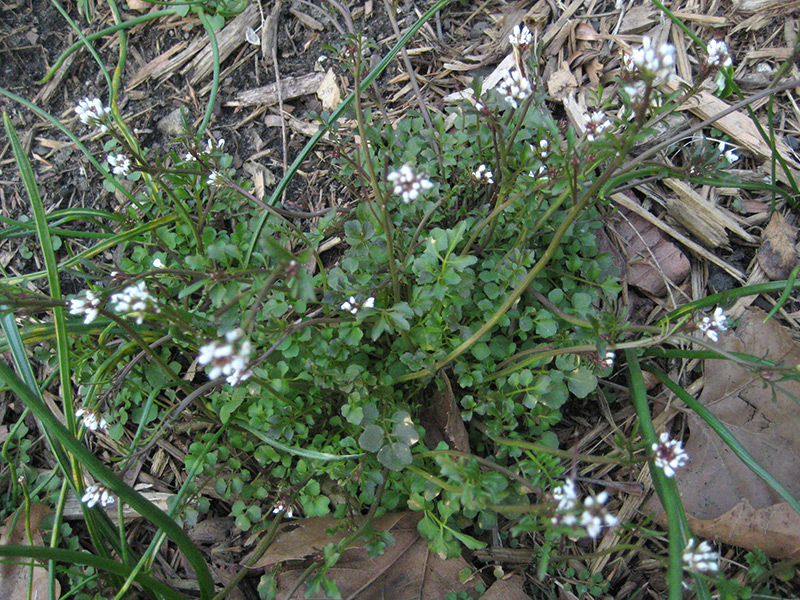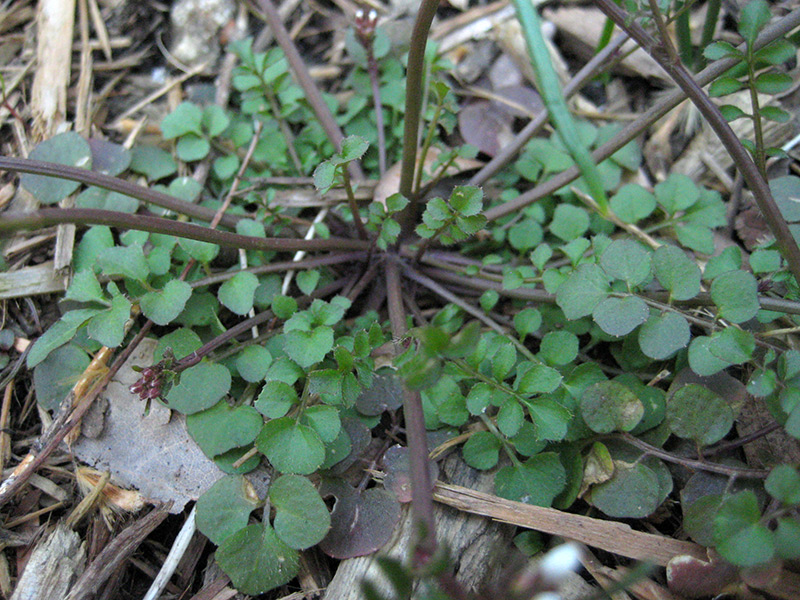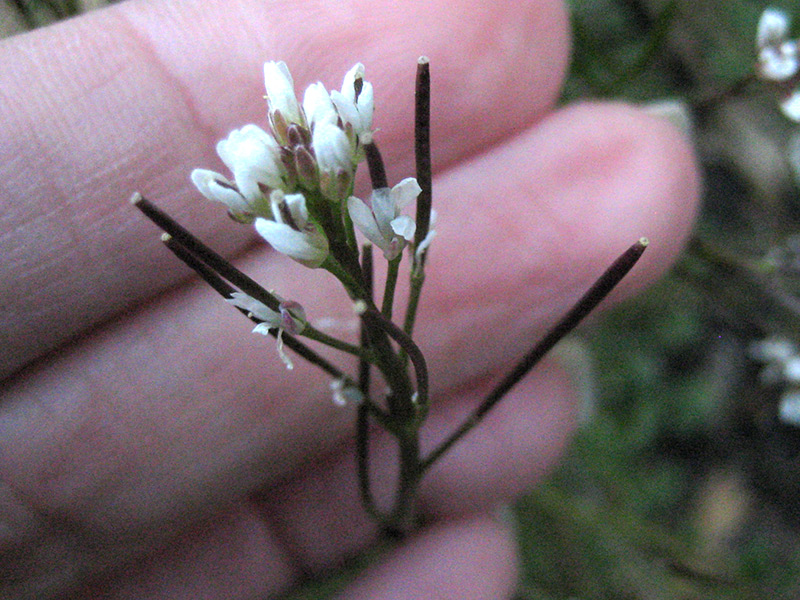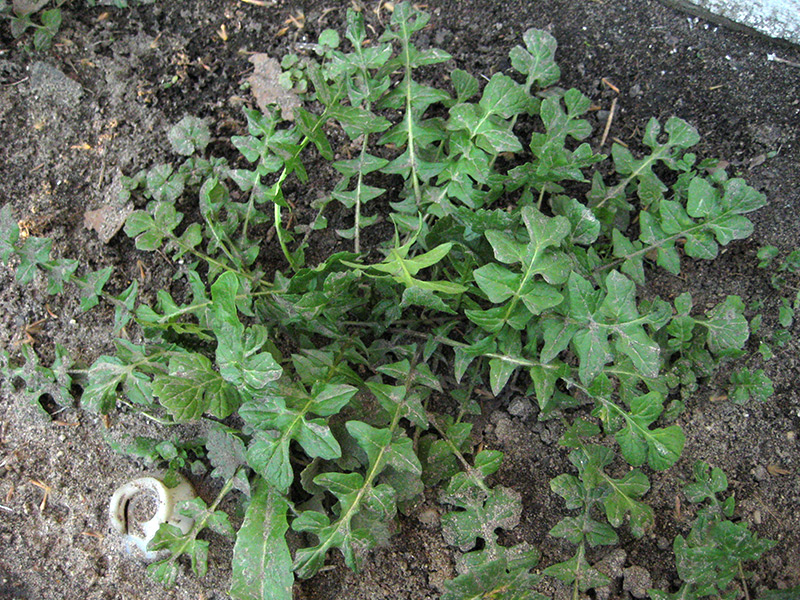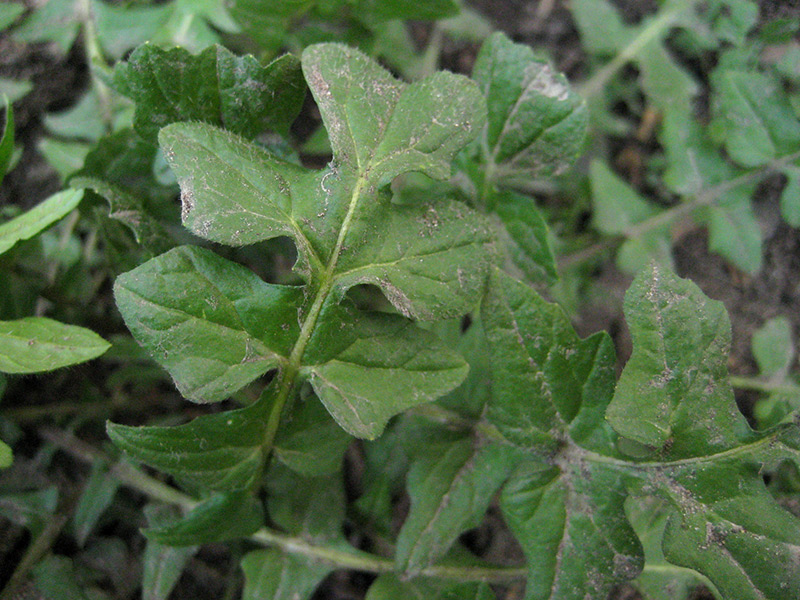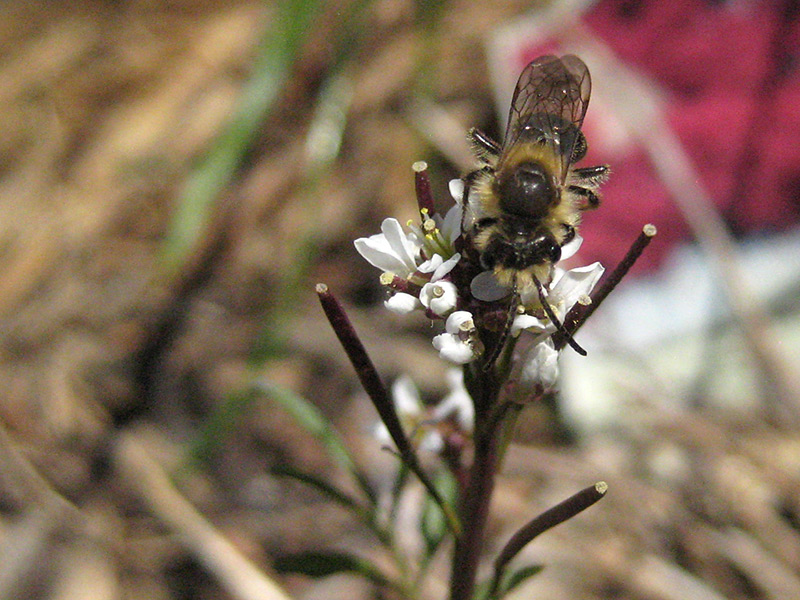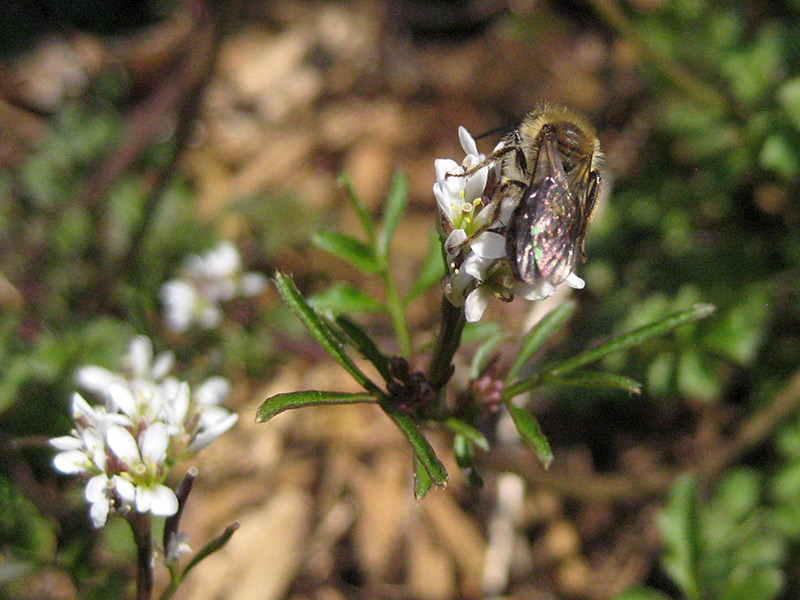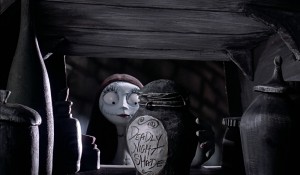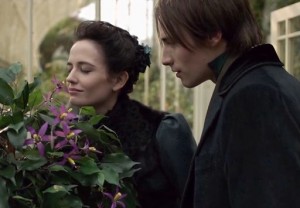As Spring progresses, the intentionally placed plants are not the only plants growing on the Lot. Here is another installment of Spring Weeds. I’d like to call the sequel The Creeps in honor of this first weed which can drive a gardener (or this gardener at least) to drink. I referenced the handy-dandy An IPM Pocket Guide for Weed Identification in Nurseries and Landscapes to identify these.
Ground Ivy
Known also as Creeping Charlie (Glechoma hederacea L.), this perennial grows low along the ground and has approximately 1″ kidney-shaped to rounded leaves and long leave stems. The plant is a member of the Lamiaceae (mint) family.
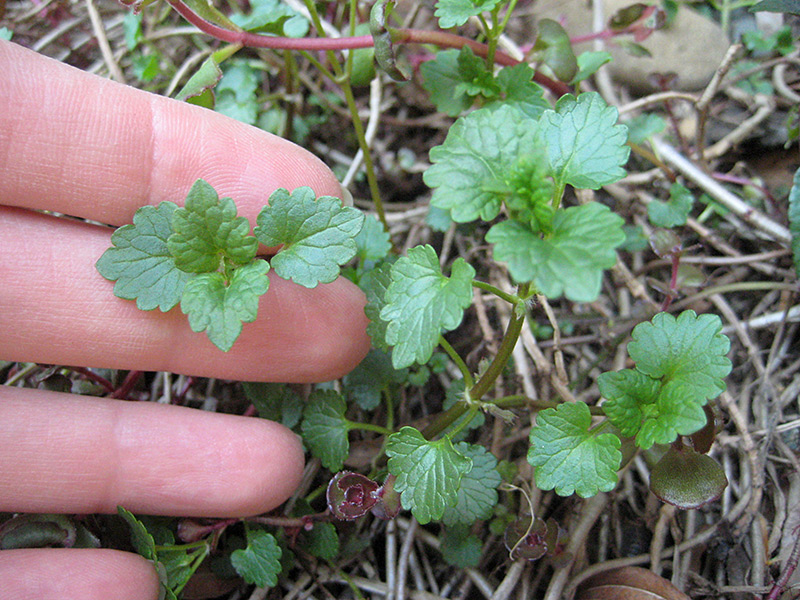
If you can get ahold of the vining portion of the plant, it can be pulled up fairly easy in long strips. The multiple roots along the vine are shallow. Yes, that’s right, this plant has root nodes along the entire length of the vine. Here is a picture of one of said nodes and the root structure.
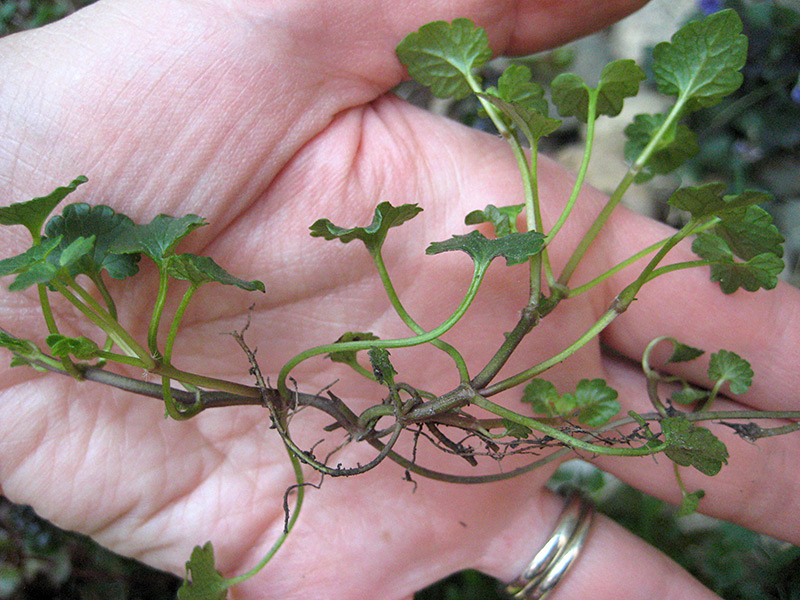
This ability creates large swathes of ground ivy. It also can spread by seed. The flowers are “purplish blue” and “funnel-shaped.” I usually find ground ivy along the Lot’s fence line, the house’s foundation, and the edges of beds as shown below. I’ve also seen ground ivy inundate a lawn in areas where the turf grasses do not grow well.
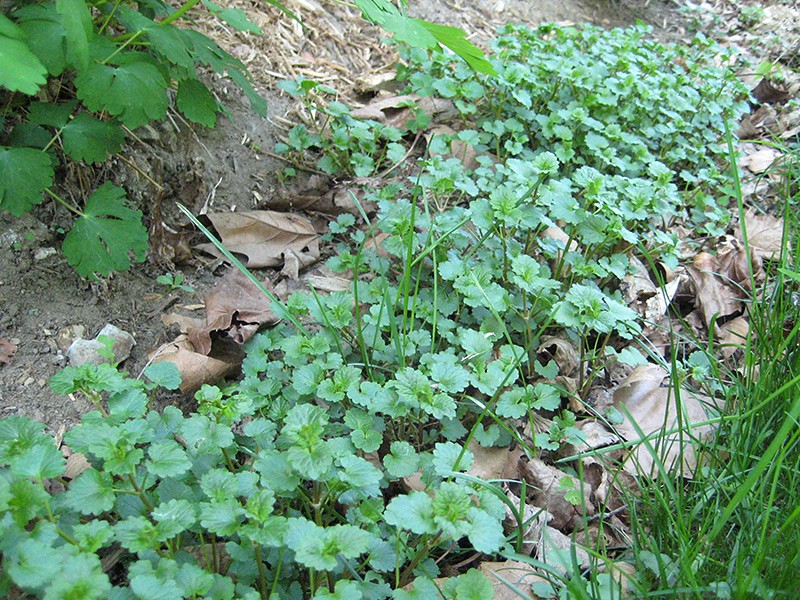
Common Mallow
The leaves on this next annual (or biennial) are “rounded with a heart-shaped base, palmately veined, hairy and found on long, slender, hairy petioles.” Common Mallow (Malva neglecta Wallr.) can reproduce by seeds or stem fragments. The flowers have “five white and purple-ringed petals.” This weed was found in a thin area of mulch.
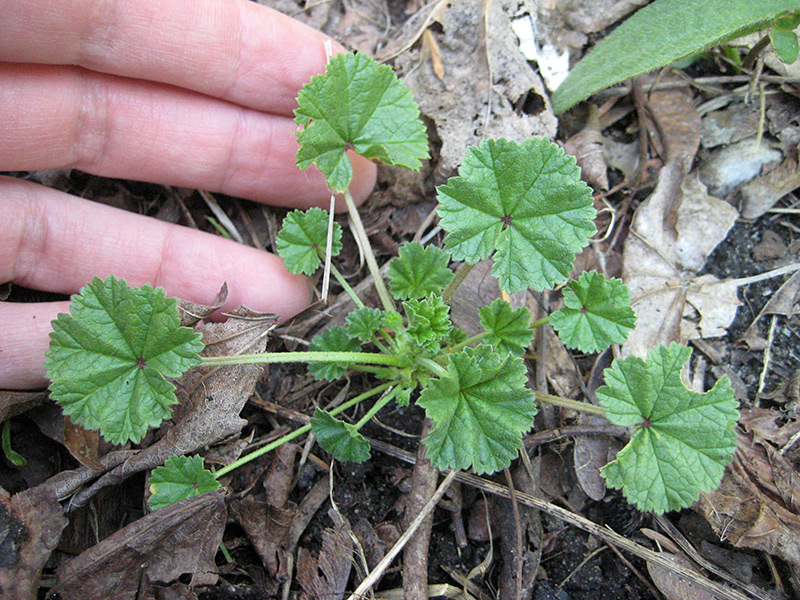
Buckhorn Plantain
Leaves on Buckhorn Plantain are thin and spear-like with parallel veins. The leaves have a smooth margin and all grow from a central rosette. Plantago lanceolata L. has a tall stalk with cylindrical flowers. This simple perennial reproduces through seed and basal shoots. I usually find these on the Lot in bare areas of the lawn and in the dirt of the drives.
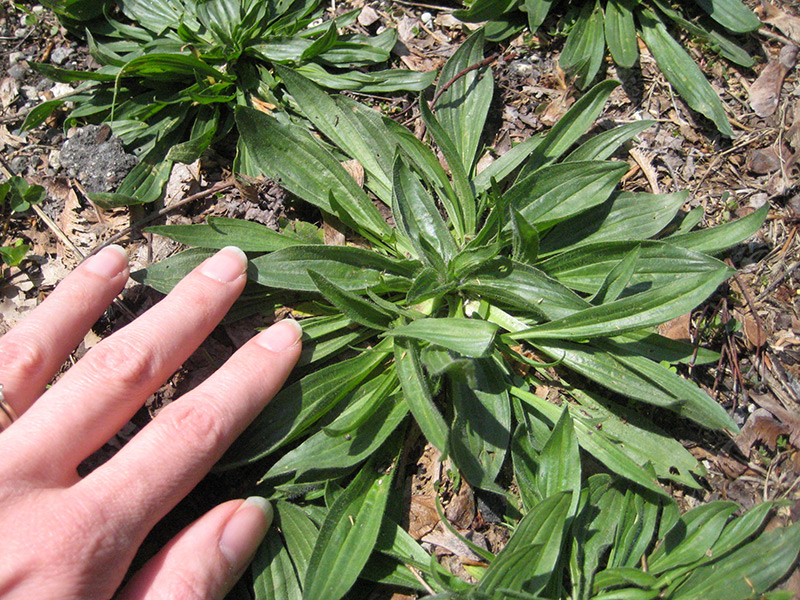
Yellow Rocket
This upright winter annual or biennial (Barbarea vulgaris R. Br.). belongs to the mustard (Brassicaceae) family. The weed can survive mowing, but is often found in areas where there is recently disturbed soil and little turf. It spreads by reseeding.
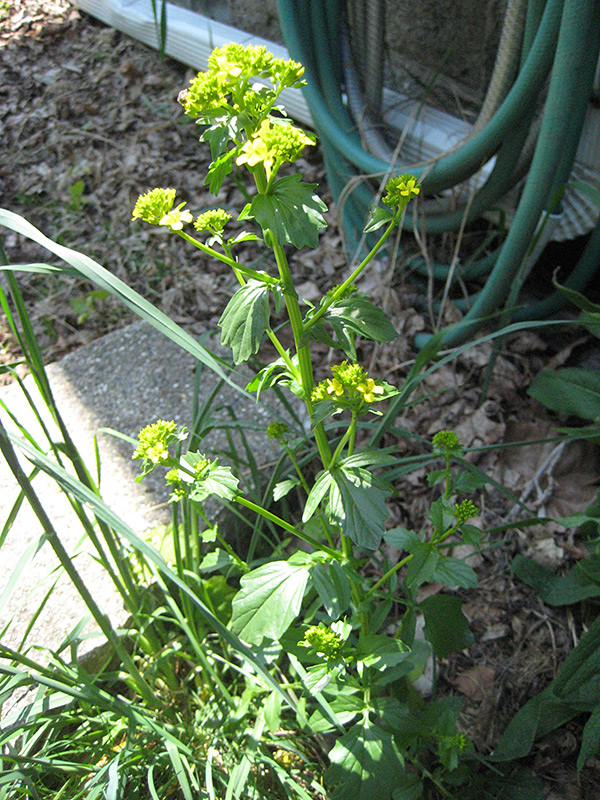
Here is a closer shot of the glossy leaves and distinctly lobed pattern on the more mature leaves.
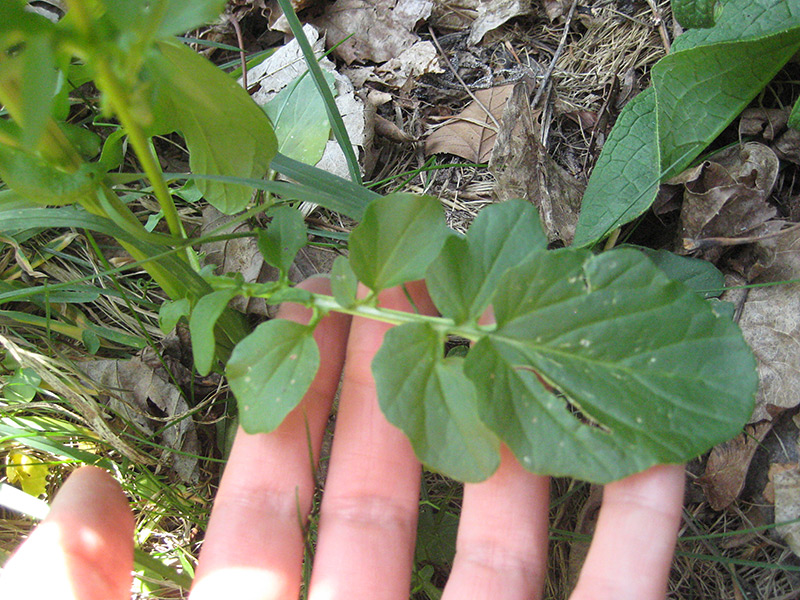
And this is a shot of the flower head with an interested bee. So, the gardener is giving this weed a pass until the plant begins prepping seeds. I’ll hand pull it then.
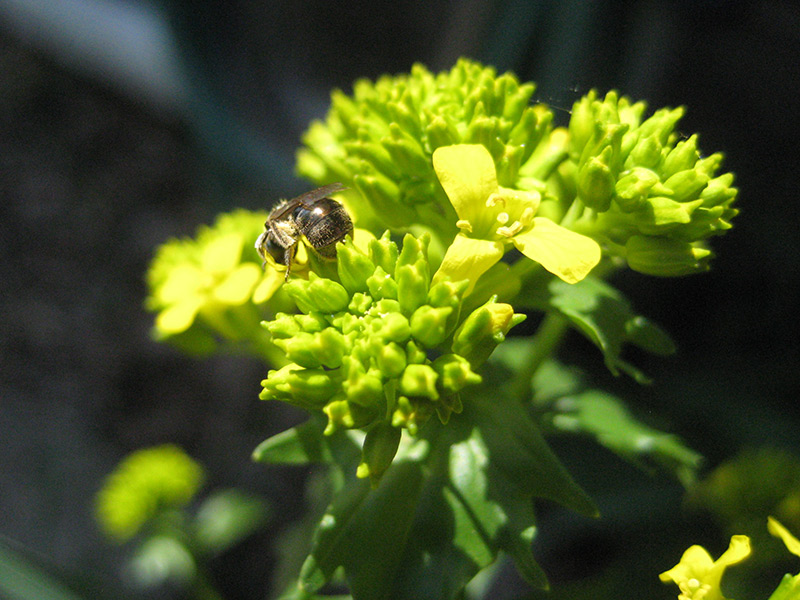
TBD
This one I am not so sure of since I couldn’t find it yet.
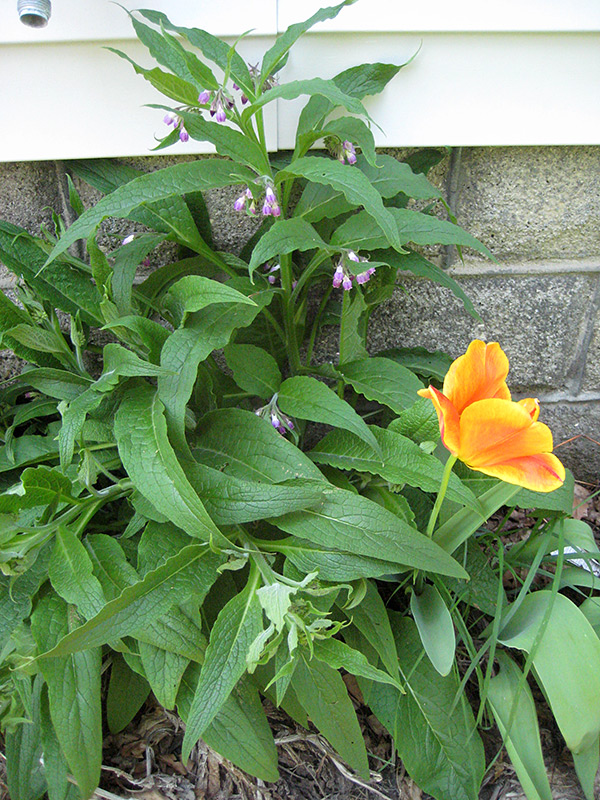
Here is a close up of the hairy leaves.
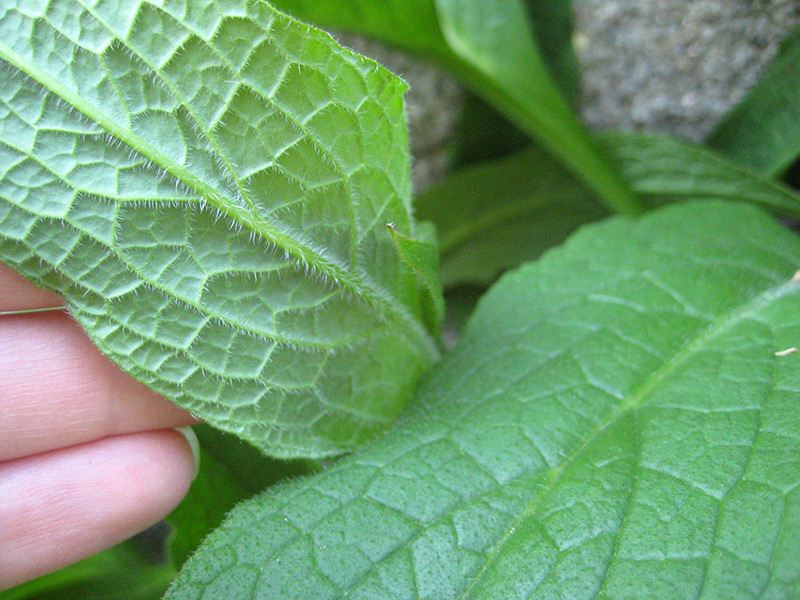
This is a close up photo of the flower clusters.
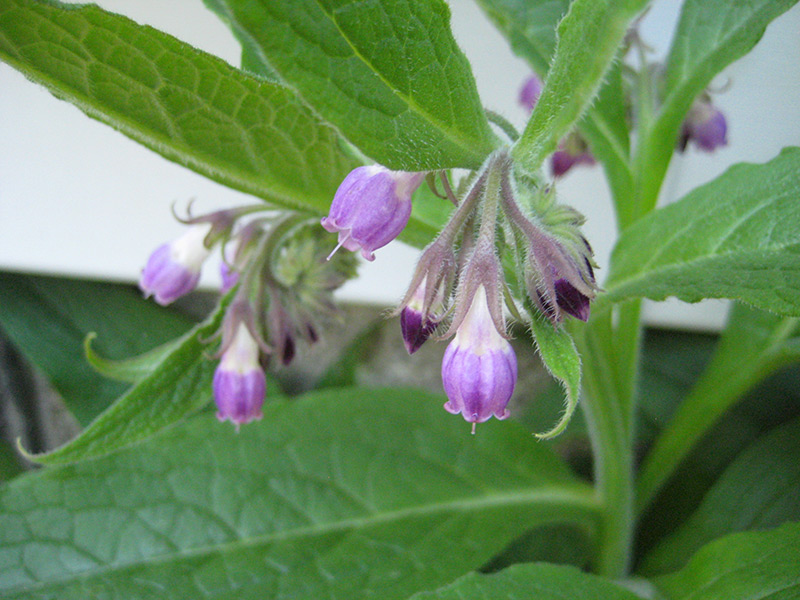
If anyone has any guesses, please leave the name in the comments. Thanks!
